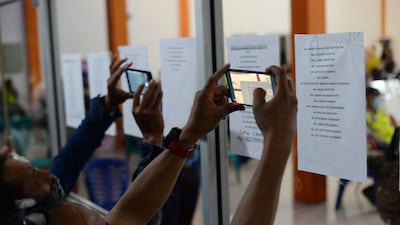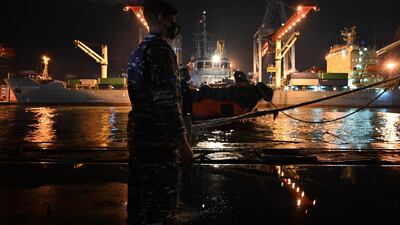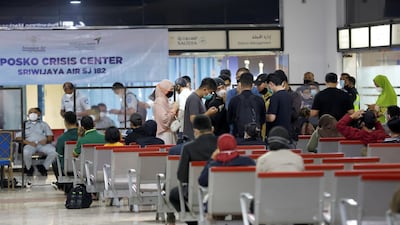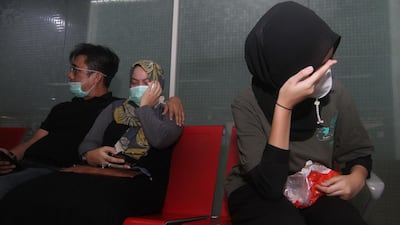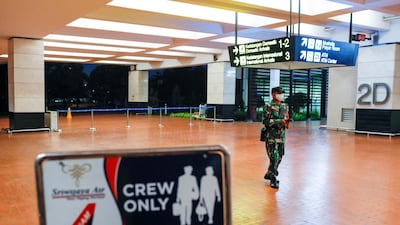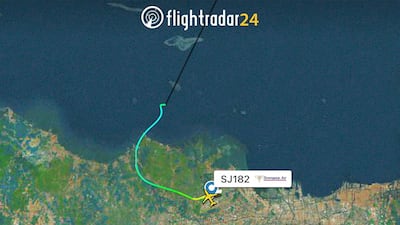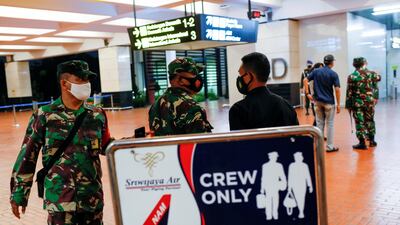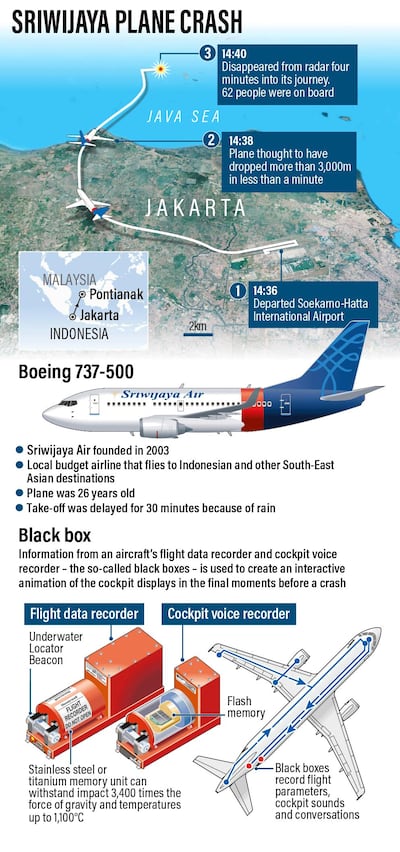There was no indication of an emergency call from the crew of the Indonesian passenger jet that crashed into the sea at the weekend, an investigator said.
A recording of conversations with air traffic control pointed to routine exchanges, and there was no communication as the Sriwijaya Air Boeing 737-500 plunged about 3,000 metres in less than a minute into the Java Sea off Jakarta, Nurcahyo Utomo of Indonesia’s National Transport Safety Committee said on Monday.
“It’s like a normal conversation and nothing suspicious,” he told news agency AFP. “There’s no talk of an emergency or something like that.”
The jet vanished minutes after taking off from Jakarta during heavy rain. Divers are scouring the seabed for the plane’s data recorders, which were detached from the tail of the aircraft when it went into the sea.
There were 62 Indonesian passengers and crew aboard the half-full flight, including 10 children.
The search so far has yielded plane parts and human remains but no sign of survivors.
Signals from the jet’s black boxes – the cockpit voice and flight data recorders – were picked up between Lancang and Laki islands in the Thousand Island chain north of Jakarta’s coast.
Officials said they have marked the area from which the sounds were emitted.
About 2,600 rescue workers in more than a dozen helicopters, 53 navy ships and 20 boats have been searching for survivors since Sunday.
Parts of the plane were found in the water at a depth of 23 metres, leading rescuers to continue searching the area.
Bagus Puruhito, chief of Indonesia’s National Search and Rescue Agency, said divers using “ping locator” equipment were looking for an object detected beneath 20 metres of seabed mud.
The cockpit voice recorder holds conversations between pilots, and the data recorder tracks electronic information such as airspeed, altitude and vertical acceleration. When found, they will be taken to port and handed to the National Transport Safety Committee.
Soerjanto Tjahjono, the committee’s chairman, said that once found, it would take three to five days to dry and clean the devices and download the data. More time will needed for analysis of the information, “depending on the complexity of the problem”.
Mr Tjahjono said the debris was concentrated in one area, while a mid-air explosion would have caused it to be spread over a large area.
“It broke apart naturally upon impact with water ... there is no indication of unnatural destruction or explosion so far,” he told The Associated Press news agency. “However, this still has to be confirmed by reading the black boxes.”




